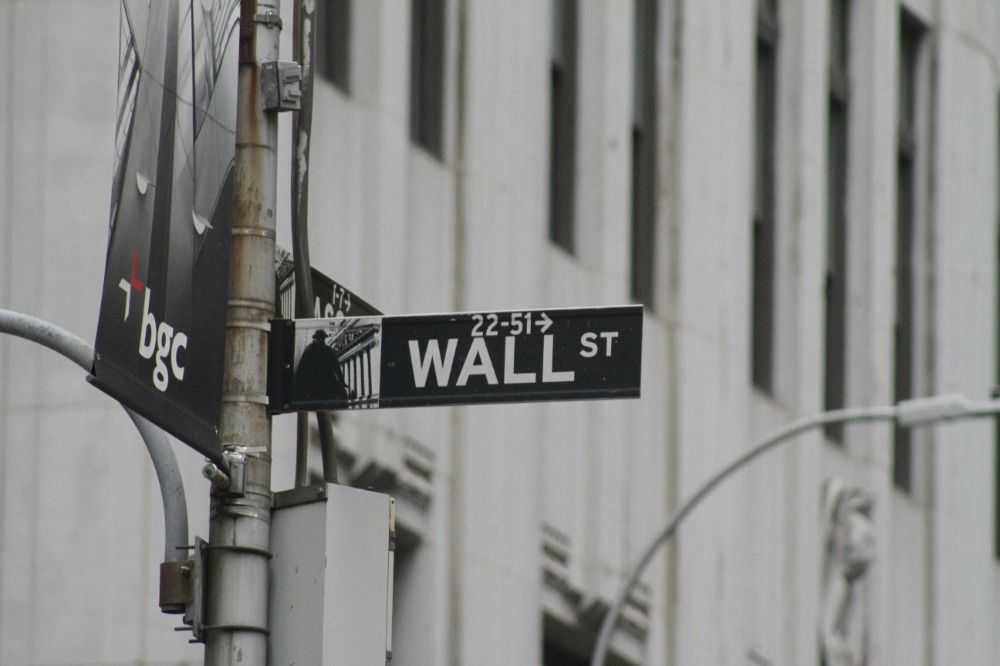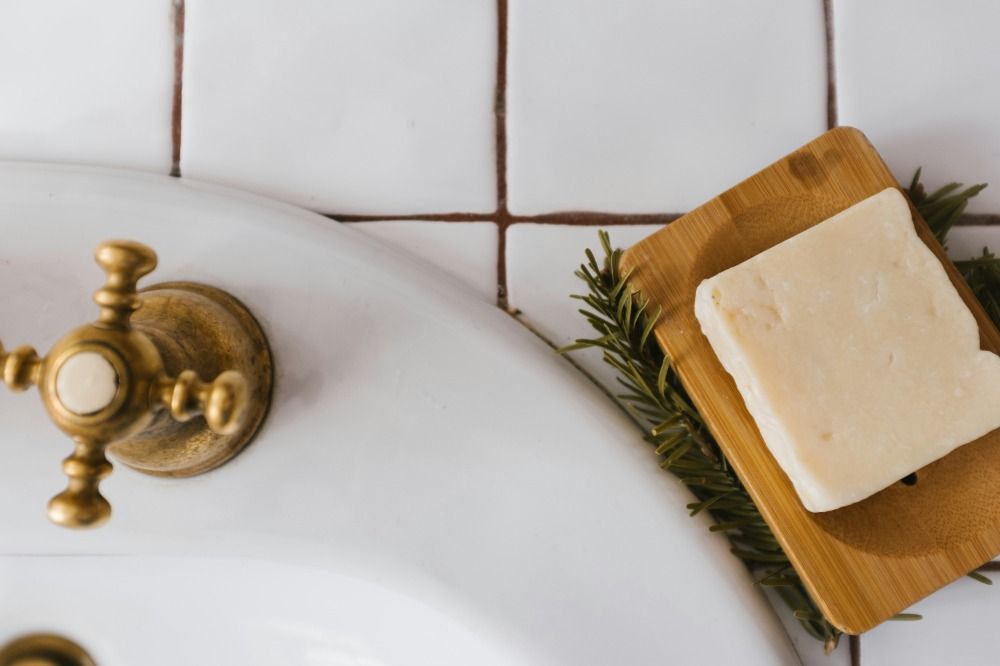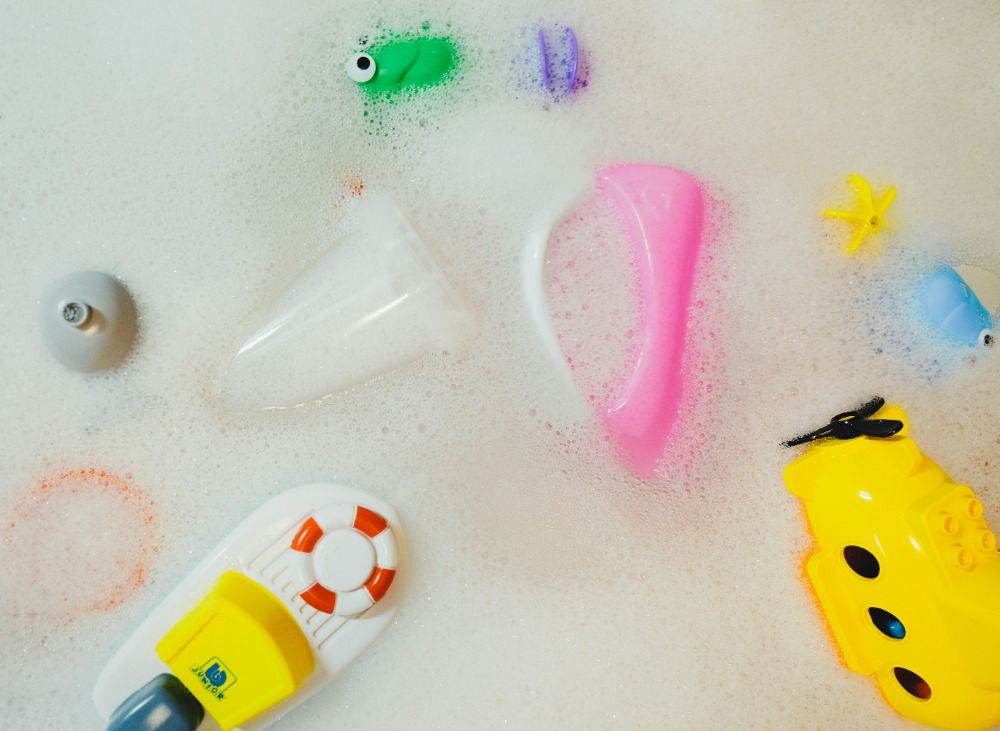How Wild deodorant redefined the personal care category
We all use reusable water bottles, reusable coffee cups, reusable bags — reusable products in nearly every aspect of our lives.
But when it comes to the bathroom, we’re still throwing pretty much everything into the trash once we’re done with it. Why is that?
Wild set out to change that and remove single-use plastics from your personal care routine.
Here’s the story of how we brought sustainability to the bathroom through our all-natural, refillable deodorants.
We started with a clear mission: bring sustainability to the bathroom
The bathroom has been a notoriously difficult place for sustainability, but we found there’s a clear market to introduce more sustainability into cosmetics and self-care products.
This quickly became our mission: to remove single-use plastics and unnecessary ingredients from your everyday personal care routine.
We wanted to develop simple, natural formulas that are easy for customers to understand, and we wanted to design convenient, beautiful, sustainable products to house them.
Single-use plastics dominate in the bathroom because they’re such an obvious solution for that environment.
You use a product in the morning as part of your daily routine and throw it away. Or, once it’s empty, like a deodorant pack, you toss it in the bin.
There’s very little that gets recycled in the bathroom, and that’s why it was such an exciting opportunity to us — but also a really big challenge.
So, why start with deodorant? We wanted to find a product where there was demand but not a sustainable solution yet.
Natural deodorants have been a massive growth sector in the U.S. market over the last four or five years. There was a clear demand and need for these products in Europe, too.
I worked for HelloFresh prior to founding Wild, and I noticed the same trends happening in personal care products as in food.
People are beginning to be more aware of the ingredients in products and the impact they have, whether it’s what they’re putting in or on their bodies.
So we focused on deodorant as our initial product, and we’ve spent two years trying to be the best we can be in that space to build trust with our audience.
We launched our MVP — and learned it wasn’t good enough
Once we decided deodorant was going to be our first product, we needed to bring it to market.
We launched a minimum viable product in 2019 and came away with some key learnings. We still had some work to do to create a product that customers loved, and that served our mission of sustainability.
We launched our MVP in August 2019 through a basic Shopify site, and we validated that people wanted a good natural deodorant.
What we learned? We didn’t have a good natural deodorant yet. The feedback we received was, “If your product actually worked, it would be great, but you need to spend a bit more time on it.”
We had enough data to prove there was a market out there, and it was worth spending the next five to 10 years of our lives developing. We just needed to get better at making deodorants.
Still, the MVP launch was an important step in Wild’s journey. We had enough data to prove there was a market out there, and it was worth spending the next five to 10 years of our lives developing.
We just needed to get better at making deodorants. We set out to be more disruptive and incorporate our customers’ feedback in the next iteration of Wild deodorant.

We innovated and improved our product design
We partnered with product design agency Morrama to innovate on our initial design and create a concept that would serve our target audience.
Morrama had been working with us since 2019, but we used pre-seed funding in early 2020 to bring their concept to market.
There were some big challenges and risks we were taking in our new product design, and the first few variations didn’t work. Even after designing successful samples, we had four or five failed production runs.
But thanks to Morrama’s collaboration and innovation and through trial and error, we knew we had something really impactful to bring to market.
Throughout the design process, we focused on three main areas:
1. Directly address customer feedback
Our concept needed to be more intuitive to become a product that customers loved. We had to be more thoughtful about how the design would fully embody our natural, sustainable deodorant, and it had to be easy for customers to use.
All great products come from customer feedback and insights. This was a really valuable starting point for us and the Morrama team, and it gave us a lot of confidence in what we wanted to deliver.
That’s the beauty of setting up a direct-to-consumer company: you get feedback all the time. Your competitive advantage over people coming in is more feedback, more customers, and more knowledge in the market. We really tried to leverage that to make the design exceptional.
In our concept with Morrama, one particular area we addressed was the size of the packaging. We spent several months thinking about how to get our boxes, especially for refills, to fit through a customer’s letterbox.
Our final design is small enough to fit in a UK large letter size package, making it easier and cheaper for customers to order refills.

2. Design the case with aluminum
We designed the case out of an aluminum-based material to reduce actual plastics usage and move away from the plastic feel that’s so common among personal care products.
This design choice helped us deliver a less wasteful but still aesthetically pleasing experience to customers.
The aluminum helped to create a feeling of permanence, and that’s really what’s at the core of our deodorants.
When customers hold a Wild deodorant case in their hands, they’re holding a product that’s meant to be long-lasting instead of tossed in the bin. We took a lot of inspiration from Chilly’s water bottles to create a similar iconic look and feel behind our cases.
To improve on user experience from our MVP, we designed the case to be compact. It also slides apart easily so customers can remove and re-insert the deodorant refill without any trouble.
3. Create 100% compostable refills
If the aluminum design was key to reducing single-use plastics, our refills were crucial to eliminating them all together. We lived up to our sustainability promise while innovating on a natural deodorant that worked for customers.
Globally, we’re the first refillable deodorant that doesn’t use any kind of plastic in its refills (other refillable deo in the US all came in plastic containers). Instead, our refills are made from bamboo pulp.
They compost within six months and fully biodegrade within a year. The refills themselves contain a range of natural deodorants, with scents like Candy Floss, Fresh Cotton & Sea Salt, and Rhubarb & Raspberry.

As we worked through our concept with Morrama and ran into some obstacles, we were never fully sure if the risks we were taking were going to pay off.
But there was finally a point where we sold about 10,000 units during a presale and shipped them all out.
During the first month, the retention rate was something like 80%. That’s when our team realized, “This is going to work. People want this, and they really like it.”
We focused on changing perceptions to make our product launch a success
We felt our new deodorant would sell itself once word got out, so we focused on creating a great initial experience once we launched. We also knew we’d need to persuade new customers that our all-natural deodorants really do work.
We designed the product to exist in the modern-day social space, so we thought carefully about the unboxing experience for customers.
During the early stage, we also drove trials to build awareness and loyalty to our brand. With customers on board, we leveraged their enthusiasm and showed pictures of people using our deodorants across our marketing channels.
Reviews and social proof were really important to gaining more buy-in from new customers and changing the wider perception around natural products.
Reviews and social proof were really important to gaining more buy-in from new customers and changing the wider perception around natural products.
A lot of people know what natural deodorant is, and they might even be interested in it from a sustainability standpoint.
But they’d never think of trying it because they believe that all-natural products don’t work.
But now, we have something like 7,500 five-star reviews. It just shows people we’ve actually created something that does work, and here’s the proof, so why not give it a try?

Our audience cares a lot about sustainability, so we continued to mold that messaging throughout our launch. People really want to get behind sustainable brands.
But we also took some early risks around the actual product itself to gain more momentum and capture our customer’s imagination. For instance, we launched a toffee apple scent around Halloween that sold out within two days.
People were excited to smell like apples, and that proved to be a successful strategy for us. So successful, that we released the toffee apple scent again in 2021.

We used revenue-based financing to sustain momentum through peak season
We were growing quickly in the build up to Q4 last year and wanted to make sure we could take advantage of faster revenue growth as peak season approached. For that, we needed access to capital.
With flexible funding options from Wayflyer, we got ahead on inventory, had a great end of the year, and built up momentum for our brand going into 2022.
Because peak season would bring an explosion of orders, we needed to over-invest in inventory to get ahead.
We’d have to pay for more stock months in advance to capitalize on higher demand later. We were taking a gamble, but there was the potential for greater profits and faster growth.
We didn’t want to raise further equity at that point, and we didn’t have the time or energy to deal with securing a bank loan. So we quickly focused on revenue-based financing due to its flexibility.
We’d already started to build a relationship with Wayflyer, so when we needed the capital, it was a smooth and effective transition.
The financing from Wayflyer gave us six months to refocus completely on our business and our growth trajectory in a competitive marketplace.
We used the funds for a combination of marketing investment and to scale up our inventory position. And the results were exactly what we were hoping to see.
We grew 400% in 2021, and growth really accelerated in Q4. The capital from Wayflyer allowed us to acquire about 10,000 to 15,000 new customers.
We grew 400% in 2021, and growth really accelerated in Q4. The capital from Wayflyer allowed us to acquire about 10,000 to 15,000 new customers.
Wayflyer has also been a really supportive partner to us in other ways. The flexibility that comes along with the funding is important, but they’ve also helped us with bigger issues like supply chain challenges.
They’ve made introductions for us to build relationships with contacts and work out solutions.

As a startup, use your agility to innovate boldly
Sustainability was a huge draw for our company because we realized we had the flexibility to take risks and do it better than enterprise or legacy brands.
If someone like Dove, for example, wants to bring out new packaging, think of the chain of command, the number of stakeholders, and the need for that to be a success. They’d have to do years of market research, testing, and consumer research.
They’d have to set up their supply chain and get to the target margin profile from day one.
On the other hand, a startup can say, “Hey, I've got this idea. I'm going to put it together.” Investors know the risk of failure, and they also know there's the potential to do something exciting and innovate in that space.
At Wild, we used our position as a startup to take risks and use the most innovative technologies available to us to create a truly revolutionary product.
We may not have had the money others had, but we also had no commitments, no ties, and no reason to follow the beaten path. Other founders can use the same approach to their advantage.
Be clever with how you invest, and think in a more agile way to differentiate from what’s been done before.



